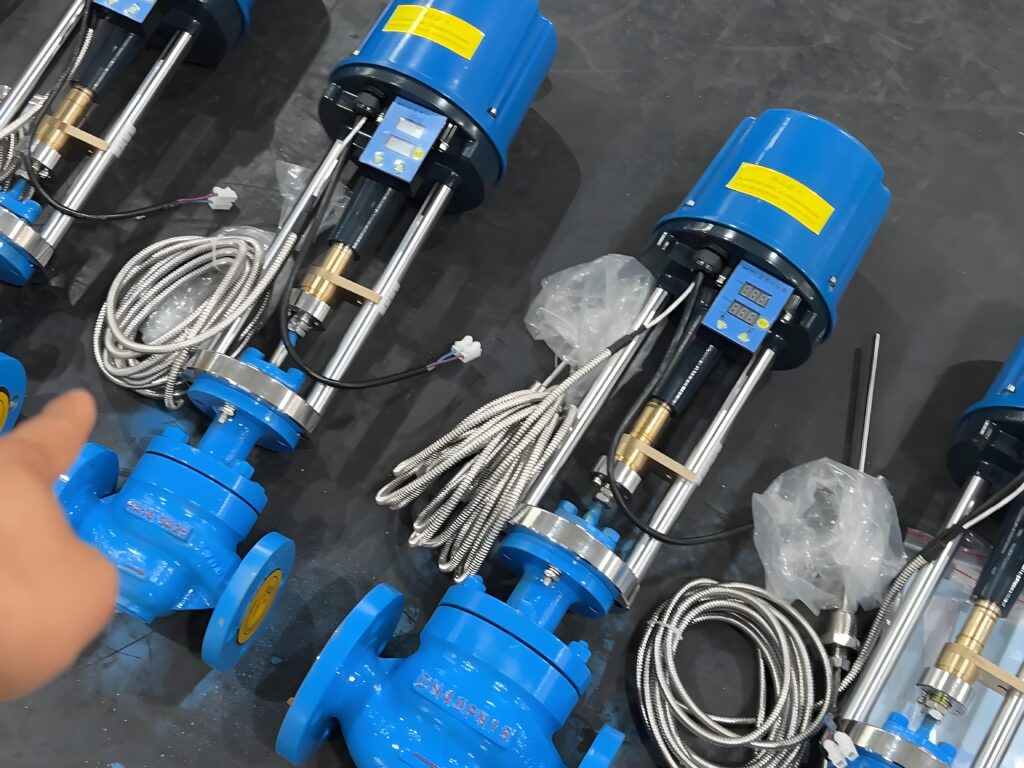Regular maintenance of smart control valves is the key to ensure stable operation of the system. This article provides quick diagnosis and solutions for common failures, to help you efficiently restore equipment performance.
First, the core components maintenance
Valve stem and push rod
Symptom: surface wear or corrosion.
Treatment: Immediately replace the damaged parts.
Compression spring
Inspection: Cracks or insufficient elasticity need to be replaced (high stiffness springs are recommended).
Seal components
Replacement cycle: Renew packings, gaskets and O-rings at each service.
Diaphragm Inspection
Standard: Cracks, aging or corrosion must be replaced.
Typical fault diagnosis
Failure phenomenon Possible causes Solutions
Flange leakage Loose bolt / gasket failure / foreign matter blockage Retighten / replace gasket / clean sealing surface
Valve jamming Foreign object blockage / excessive differential pressure / spring breakage Remove impurities / upgrade actuator / replace spring
Closed leakage Worn sealing surfaces / foreign matter / seat gasket failure Grind and repair / clean valve body / replace gasket
Stem leaks Loose packing/insufficient layers/aging failure Tighten gland/add packing/renew seals
Electrical and Actuator Problems
No signal response
Troubleshooting: Clogged air supply / Failed positioner / Stem stuck.
Repair: Unclog piping / Repair positioner / Lubricate valve stem.
Unstable action
Cause: Spring too soft / Packing too tight / Small opening operation.
Adjustment: Replace the spring / relax the gland / optimize the spool design.
IV. Handling of performance degradation
Reduced adjustment range
Causes: Changes in working conditions / flow path blockage / spool corrosion.
Countermeasures: Re-select the type / Clean the valve body / Replace the inner parts of the valve.
Slow response
Causes: Low pressure of gas source / leakage of actuator / broken diaphragm.
Measures: Repair air source / Repair leakage / Replace diaphragm.
V. Preventive Maintenance Recommendations
Quarterly inspection:
Check seals for deterioration.
Test spring force (a dynamometer is recommended).
Annual calibration:
Optimize parameters of the smart positioner using HART protocol.
Verification of the leakage level (refer to ISO 5208).
Spare parts management:
Keep a stock of wearing parts such as diaphragms, springs, etc. (recommended for annual consumption).
Summary
Systematic maintenance and quick troubleshooting can significantly extend the service life of smart control valves. It is recommended to contact an ISO 9001 certified service provider for a professional maintenance program to ensure compliance with ASME/API standards. Repeat failures can be reduced by more than 30% by choosing genuine spare parts.
Intelligent control valve common troubleshooting strategy

Intelligent control valve common troubleshooting strategyIndustrial Automation and Its Maintenance Guide